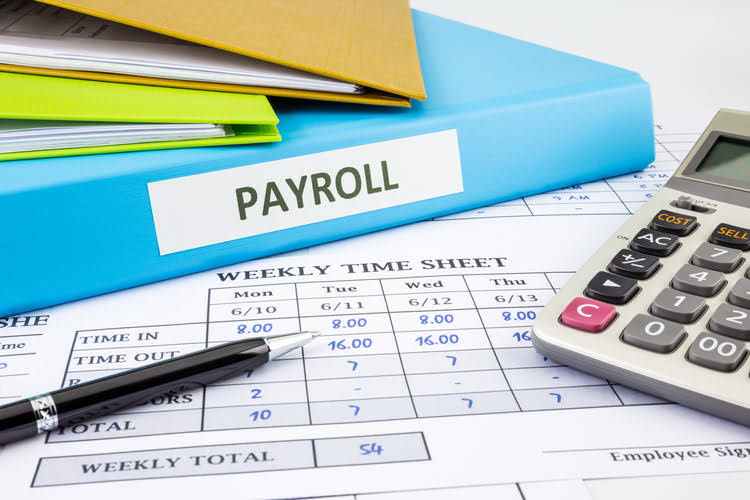AFROLET BLOG SECTION
Does Accounts Receivable Go on the Income Statement?
Does Accounts Receivable Go on the Income Statement?

This creates an account receivable, which represents the amount that these customers owe you at any given time. The process of collecting this money can take anywhere from a few days to several months, depending on the payment terms https://www.bookstime.com/ agreed upon between you and your customer. Whether cash payment was received or not, revenue is still recognized on the income statement and the amount to be paid by the customer can be found on the accounts receivable line item.
- Figure 2.6 shows the financial information (as of June 30) for Cheesy Chuck’s.
- As per Accrual System of Accounting, you record Allowance for Doubtful Accounts so that you get an understanding of the amount of bad debts that can occur in future.
- Accounts Receivable Turnover in days represents the average number of days your customer takes to make payment against goods sold on credit to him.
- A high AR turnover ratio indicates that a company pays its bills quickly and effectively.
- To recognise an expense before cash is paid, businesses increase the accounts payable balance.
Note that allowance for doubtful accounts reduces the overall accounts receivable account, not a specific accounts receivable assigned to a customer. Because it is an estimation, it means the exact account that is (or will become) uncollectible is not yet known. When a customer pays their invoice, make sure to record the transaction accurately in your system including the date received and method of payment. Always perform regular audits of your accounts receivable processes to ensure they remain effective and efficient.
What Kind of Account Is Accounts Receivable?
You may have some uncomfortable conversations, but it’s better to have them sooner than later. If you’re diligent in the collection process, you can avoid hiring a collection agency or an attorney to pursue collections on your behalf. When Lewis Publishers makes the payment of $200,000, Ace Paper Mill will increase the Cash Account by $200,000 and reduce Debtors or Accounts Receivable Account by $200,000. Though lenders and investors consider both of these metrics when assessing the financial health of your business, they’re not the same. In summary, Accounts Receivables management is critical to achieving success in today’s competitive business environment. We provide third-party links as a convenience and for informational purposes only.

That’s why it’s important for companies using A/R to track the turnover ratio and be proactive with customers to ensure timely payments. The balance sheet method (also known as the percentage of accounts receivable method) estimates bad debt expenses based on the balance in accounts receivable. The method looks at the balance of accounts receivable at the end of the period and assumes that a certain amount will not be collected. Accounts receivable is reported on the balance sheet; thus, it is called the balance sheet method. The balance sheet method is another simple method for calculating bad debt, but it too does not consider how long a debt has been outstanding and the role that plays in debt recovery.
How Does Accounts Receivable Impact the Income Statement?
Other tools include accounts receivable and payable management software, mainframe computers and categorization or classification software. The current ratio is closely related to working capital; it represents the current assets divided by current liabilities. The current ratio utilizes the same amounts as working capital (current assets and current liabilities) but presents the amount in ratio, rather than dollar, form. That is, the current ratio is defined as current assets/current liabilities. The interpretation of the current ratio is similar to working capital. Let’s prepare the income statement so we can inform how Cheesy Chuck’s performed for the month of June (remember, an income statement is for a period of time).
- He currently researches and teaches economic sociology and the social studies of finance at the Hebrew University in Jerusalem.
- As a business owner, tracking accounts receivable is essential for managing cash flow and ensuring that your revenue streams remain consistent over time.
- A company that sells products on credit, meaning before it gets paid, sets terms for its A/R.
- Further, it also measures how efficiently you as a business use your assets.
- There are different types of income statements, including single-step and multi-step statements, which vary in their complexity and presentation format.
- In practice, when companies lease items, the accountants must determine, based on accounting rules, whether or not the business “owns” the item.
- Since it represents a significant liability, a business must record AP separately from other liability accounts.
Our first step is to determine the value of goods and services that the organization sold or provided for a given period of time. These are the inflows to the business, and because the inflows relate to the primary purpose which accounts are found on an income statement of the business (making and selling popcorn), we classify those items as Revenues, Sales, or Fees Earned. Accounts receivable balances that will not be collected in cash should be reclassified to bad debt expense.




